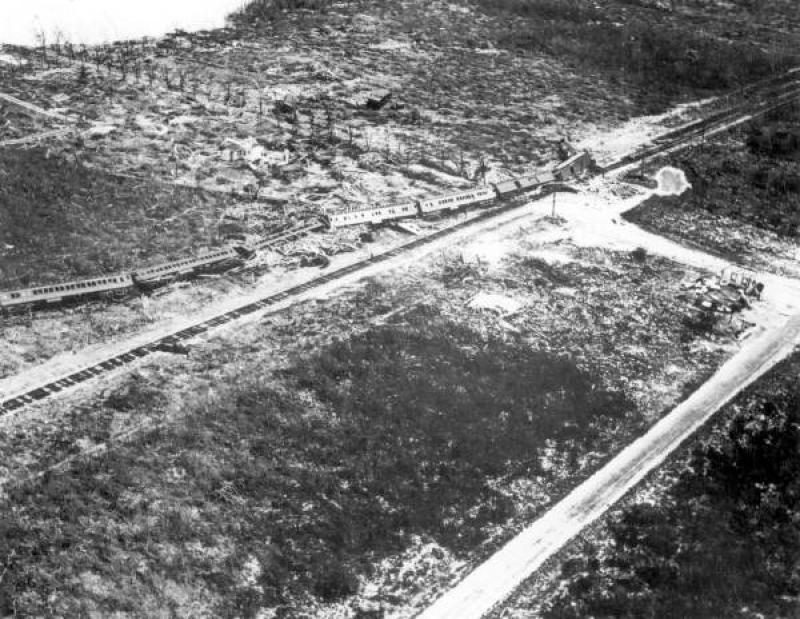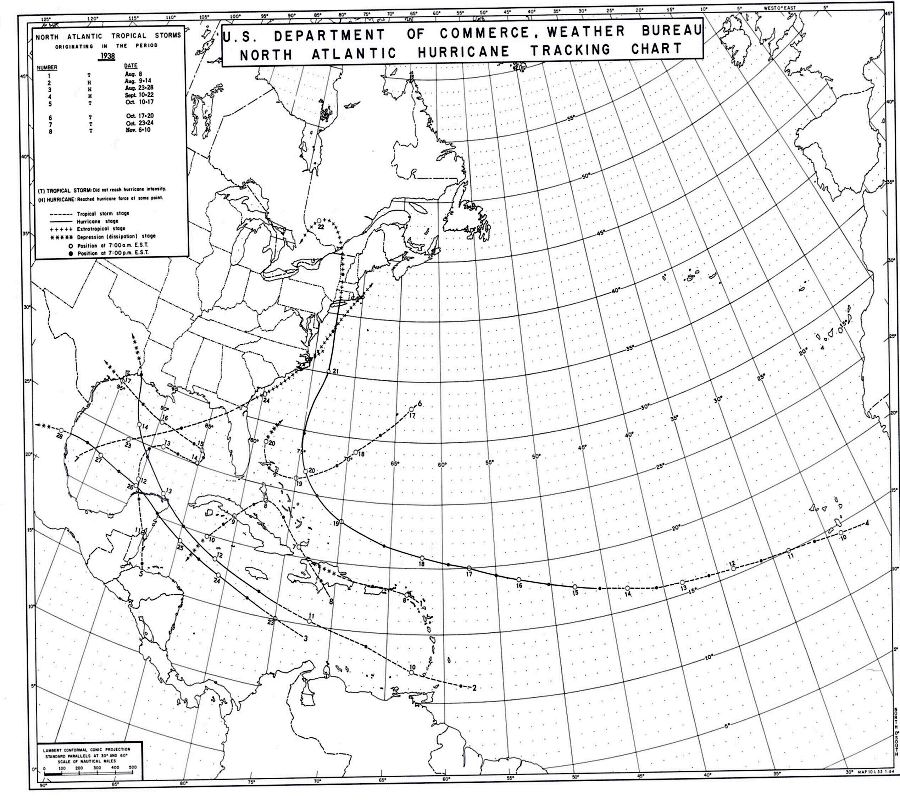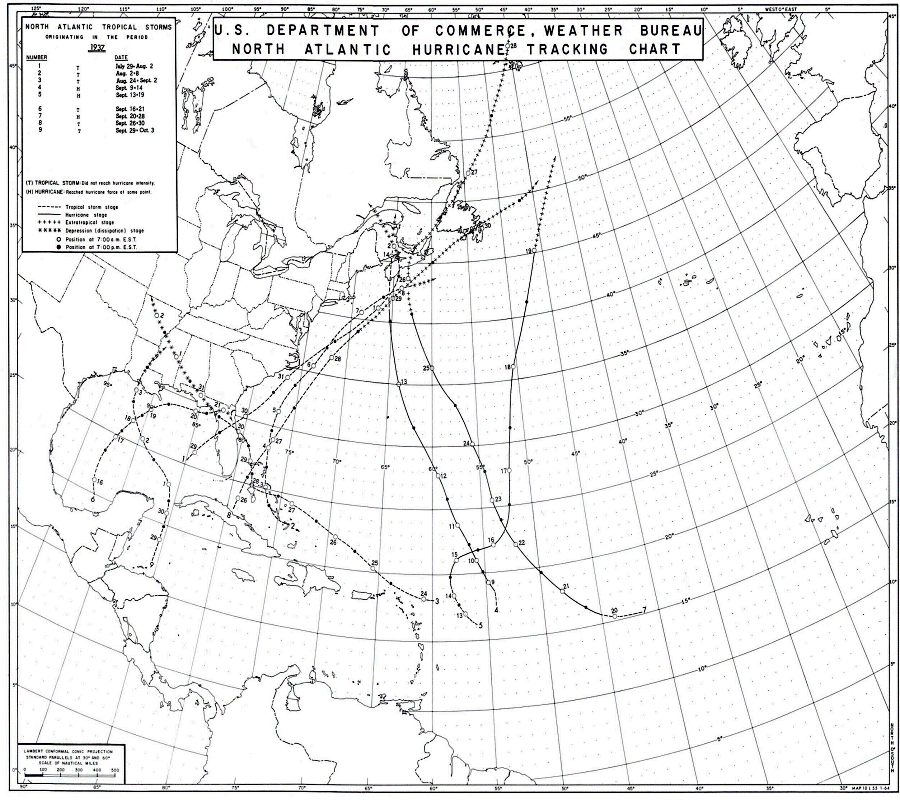
Forecasts within the hurricane advisories were issued one day into the future in 1954 before being extended to two days into the future in 1961, three days into the future in 1964, and five days into the future in 2001. The National Hurricane Research Project, begun in the 1950s, used aircraft to study tropical cyclones and carry out experiments on mature hurricanes through its Stormfury project. The National Hurricane Center became a tropical cyclone warning center in 1956 and assumed many of the functions it has today by 1965. Hurricane advisories issued every 12 hours by the regional hurricane offices began at this time. This responsibility passed to regional hurricane offices in 1935, and the concept of the Atlantic hurricane season was established to keep a vigilant lookout for tropical cyclones during certain times of the year. The central office in Washington, which would evolve into the National Meteorological Center and the Weather Prediction Center, assumed the responsibilities by the early 20th century. After his death, hurricane warning services were assumed by the US Army Signal Corps and United States Weather Bureau over the next few decades, first based in Jamaica and Cuba before shifting to Washington, D.C. The first service was set up in the 1870s from Cuba with the work of Father Benito Viñes. The history of Atlantic tropical cyclone warnings details the progress of tropical cyclone warnings in the North Atlantic Ocean. This searchable interface provides access to many of our historical special reports and publications on extreme events like hurricanes, droughts, wildfires, and flooding.Hurricane Warning Offices and their areas of responsibility, circa 1959

Special Reports on Extreme Climate Events The Storm Events Database contains data and information collected by the National Weather Service during hurricanes, tornadoes, thunderstorms, and other severe weather. Billion-Dollar Weather and Climate Disasters data and information provides information on direct economic losses, deaths, and other impacts for numerous weather and climate disasters including tropical cyclones. This database, also known as IBTrACS, stores information for all known tropical cyclones recorded since the 1850s.īillion-Dollar Weather and Climate Disasters
1935 HURRICANE TRACK ARCHIVE
International Best Track Archive for Climate Stewardship By collecting and examining these data, scientists can characterize aspects of average hurricane seasons, examine changes in frequency and intensity, and better predict future risk.
1935 HURRICANE TRACK FREE
NEWIS is also available as a free app compatible with Apple devices such as iPhone, iPod Touch, and iPad.Īnalyzing Past Tropical Cyclones to Better Predict Future RiskĪnother way NOAA and NCEI help you prepare for hurricanes is by examining climatological data. Virgin Islands.ĭownload the NOAA Extreme Weather Information Sheets iOS App NEWIS are available for coastal regions that are particularly at risk from tropical storms and hurricanes-from Texas to North Carolina as well as in Hawaii, Puerto Rico, and the U.S. The NOAA Extreme Weather Information Sheets, or NEWIS, are two-page reference sheets containing local, state, and federal phone numbers and websites in case of emergency. Whenever a tropical depression, tropical storm, or hurricane has formed in the Atlantic or eastern North Pacific, NOAA’s National Hurricane Center issues tropical cyclone advisory products at least every 6 hours. Hurricane and Tropical Storm Watches, Warnings, Advisories, and Outlooks NOAA’s National Weather Services has a variety of resources to help you know if you’re at risk, put together an emergency kit, create a family emergency plan, and better understand alerts, watches, and warnings.

One of the best ways to stay safe during a hurricane is to plan ahead. NOAA and NCEI provide a variety of resources to help you stay safe and be prepared. Staying Safe As Hurricanes Approach Where You LiveĪs Andrew and many others have demonstrated, hurricanes are among nature's most powerful and destructive phenomena.

The lives saved during Andrew serve as testimony to the success and importance of these coordinated programs. A combination of good hurricane preparedness and evacuation programs likely helped minimize the loss of life.

While very unfortunate, the loss of life due to Andrew was far less than had previously occurred during hurricanes of comparable strength-especially given the tremendous structural damage Andrew caused. Over 1.2 million people are estimated to have evacuated from Florida, with another 1.25 million evacuating from Louisiana and 250,000 from Texas. coast, massive evacuations were ordered in both Florida and Louisiana, where the storm made its second landfall.


 0 kommentar(er)
0 kommentar(er)
